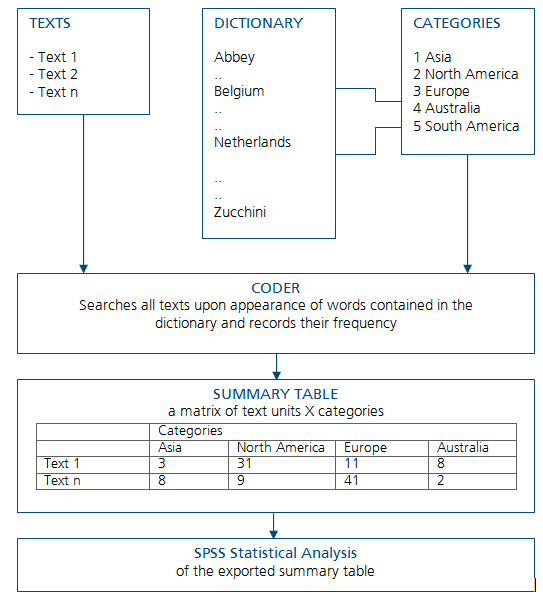Based on well-known textbooks like KRIPPENDORF (2004), an outline of the following classical quantitative content analysis schema is possible:

The starting point of the analysis is a certain number of texts, often called the text corpus. If necessary, the texts can be subdivided into individual sections, such as a book is divided into chapters. These sections are also called text units. They can also function as counting units, so that if you perform a dictionary based content analysis, each unit of analysis will be counted separately.
Independent from the texts, you work with a dictionary or encyclopedia. This dictionary consists, on the one hand, of an unlimited number of categories. On the other hand, it includes the words that are attached to these categories. In the example below, the words “Belgium” and “Netherlands” belong to the category “Europe.”
The content analysis allows counting the category frequencies for texts or parts of text on the basis of the dictionary. It is as if a certain number of savings boxes are put up for each text – exactly as many as there are categories. The text editing starts with the first word of the text. Then, for each word that is also contained in the dictionary, a counting piece will be put into the savings box in the assigned category. After the whole text has been processed, the number of counting pieces in each savings box is determined. A statistical evaluation for this text will be calculated which contains, among others, the following information: total number of coded words, number of coded places for Category 2, and so on.
